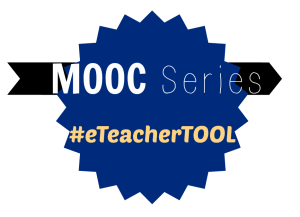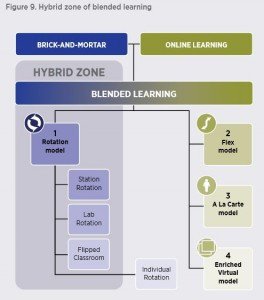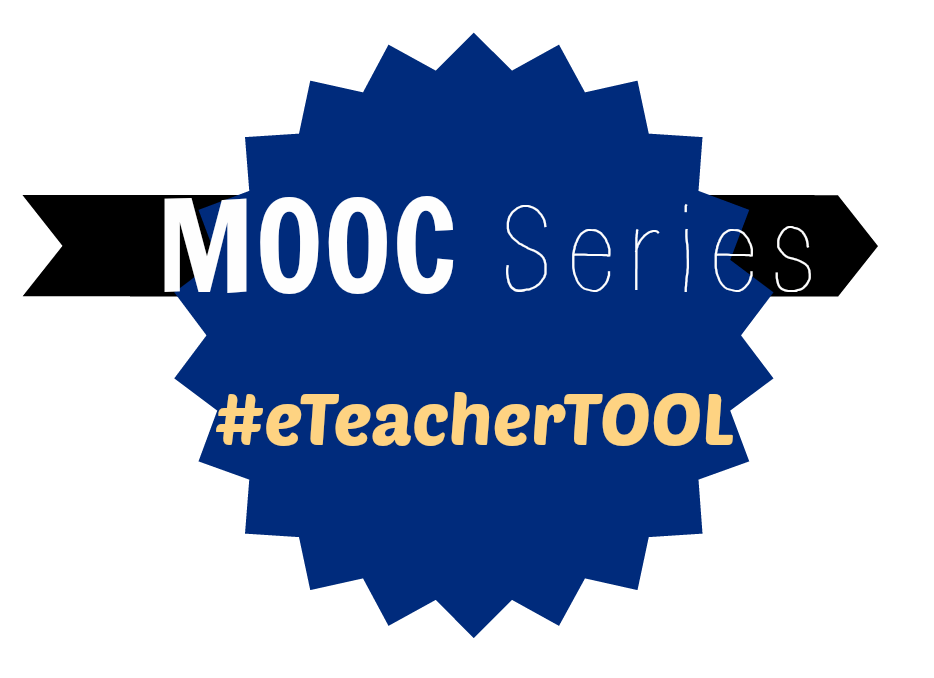 This post is one in a series for a MOOC. You can find similar posts searching under the Category MOOC or searching for hashtag #eteacherTOOL for more about this particular MOOC.
This post is one in a series for a MOOC. You can find similar posts searching under the Category MOOC or searching for hashtag #eteacherTOOL for more about this particular MOOC.
When looking at the differences between asynchronous and synchronous tools for online and blended learning it is important to be aware of the wide assortment of tools with which you can accommodate individual learners.
| Asynchronous Tools | Synchronous Tools |
| 7.Calendar | 1.Telephone Conversation |
| 8.Announcements | 2.Instant Messaging/Chat |
| 9.Course email | 3.Virtual Classrooms |
| 10.Lesson Content | 4.Video Conferencing/Skype/Webcam Display |
| 11.Discussion forums | 5.Live Whiteboard |
| 12.Dropboxes | 6.Live Screenshare |
| 13.Quizzes/Tests | |
| 14.Gradebook | |
| 15.Virtual Libraries/Repositories of Documents, Presentations, Graphics, Audio Files, and Video |
|
| 16.eMail | |
| 17.Discussion Boards | |
| 18.Social Networking | |
| 19.Wikis and Collaborative Documents | |
| 20.ePortfolios | |
| 21.DVD/CD-ROM |
In setting up a Blended Learning experience it is important for the teacher to consider his/her teaching style and realistic expectations for what can/should go online and what can/should stay face-to-face. The “non-negotiables” for each teacher should be unique and offered up by the teacher him/herself. “Non-negotiables” are things which that teacher, in that class, believes must happen face-to-face for the student to learn something most effectively. It is easiest to start from the place of what a teacher is not willing to give up to an online arena. Once those “non-negotiables” are set then the teacher can start exploring ways to share the content s/he is willing to share in an online format.
 Recently Michael Horn Heather Staker of The Christensen Institute introduced the idea of the Hybrid Zone within the Blended Learning model. I have previously observed that this newly recognized area may account for secondary teachers working within this zone thinking they are completely doing Blended Learning and why elementary teachers didn’t think what we were holding up as Blended Learning was all that unique and special.
Recently Michael Horn Heather Staker of The Christensen Institute introduced the idea of the Hybrid Zone within the Blended Learning model. I have previously observed that this newly recognized area may account for secondary teachers working within this zone thinking they are completely doing Blended Learning and why elementary teachers didn’t think what we were holding up as Blended Learning was all that unique and special.
The Hybrid Zone of Blended Learning is not disruptive because it appeals to current educators with little change required. Additionally, Michael Horn stated, “online learning is improving faster versus traditional school moving to blended” pointing out the value of starting from a disruptive place and the freedom that place offers to change and adapt versus working from a place which has less pressure and permission to change to the demand. Horn also made a prediction that feels like an extension of the above graphic: “HS and MS to some extent will be replaced to some extent eventually. ES disruption will be rare.” Which might mean the focus of our ‘conversion’ to be 6-12. Finally, Horn stated that disruption is taking place at classroom versus school level. (iNACOL, Orlando, October 2013)
The educator, the content, the grade level should all dictate when certain tools should be used in a course.
Paul Signorelli‘s Building Creative Bridges blog post,Synchronous Sessions, Asynchronously: Blending Meetings, Learning, and Digital Literacy brought about some interesting thoughts:
…how permeable those (perceived) barriers between synchronous and asynchronous interactions have become and how expansively we can define the concept of meetings…
What we can’t afford to miss here is that there certainly is a set of skills needed if we’re going to operate in this sort of synchronous-asynchronous world, and those set of skills can move us a bit closer to seeking broad definitions for digital literacy/digital literacies…
The first quote made me consider I should demonstrate more patience with myself and other educators as we all come to terms with the changing expectations, tools, and our understanding of both.
The second idea was to reinforce my job, I need to find creative, inviting, non-threatening ways to further the education of teachers who may not even know they want to know about the philosophy behind these tools yet.
Michigan State University College of Education’s Learning 3.0: Face-to-face, Online, Hybrid
“Up against the boundary, I have to adjust and I start wondering about what I can accomplish,” Roseth said. “Teachers make these kinds of decisions all the time, like what to do in the time left before recess. The online world forces us to think about another context.”
The questions have become:
- WHEN should students work independently (asynchronously) and when should they interact live (synchronously)?
- WHERE should they interact, whether online, face-to-face or some combination of formats (hybrid)?
I loved the thought that teachers have always struggled with design decisions. We might just consider getting used to the increased transparency involved in the recent decisions we have the privilege to make.
The real questions of the day – WHEN and WHERE – still need to be decided at the individual teacher level. However, I would strongly suggest each educator needs to be thoroughly educated in the available choices, the consequences of each of those choices, and the potential impact they could make.







2014-04-23 at 1:44 pm
Intriguing review of the tools available to us in synchronous and asynchronous learning, and helpful summary of that all important question about when and where to use one, the other, or both. Thanks for adding your thoughts to what has become a wonderfully extended conversation across multiple blog posting and over a period of time that now exceeds a full year. Looking forward to seeing where our collaborative explorations take us and our learners.